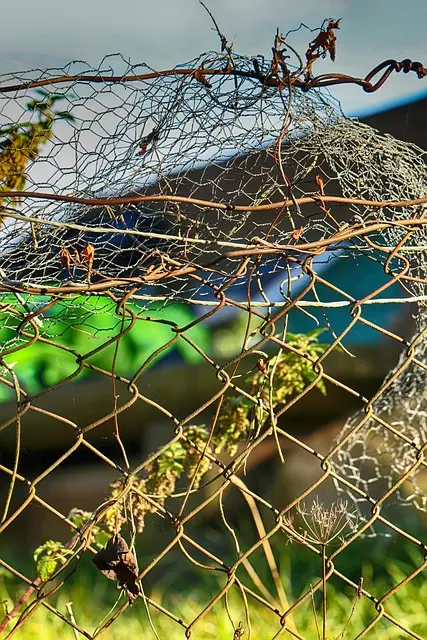Malaysian Kratom Buds, sourced from the Mitragyna speciosa tree, contain alkaloids like mitragynine and 7-hydroxymitragynine, which can influence opioid receptors to produce a range of effects, including analgesic, sedative, and euphoric sensations. These effects vary with dosage, with lower amounts promoting energy, motivation, and sociability, while higher doses offer pain relief and relaxation. The legal status of Kratom is particularly nuanced in Louisiana; it is not explicitly classified as a controlled substance under federal law or the state's Controlled Dangerous Substances schedules, but its use and sale are regulated by the Louisiana Board of Pharmacy, which classifies it as an "unapproved drug," necessitating compliance with strict regulations. Consumers in Louisiana should stay informed on any legislative changes that might affect Kratom's legal status, given the subjective nature of its regulation and the potential for shifts due to legislative decisions or court rulings. It is important for users to verify the current legality of Kratom in their location before use, as the substance's consumption methods vary from powder to tea, each influencing the potency and effects experienced. For those considering Kratom, understanding its cultivation background, historical use, and current regulatory standing is crucial.
Kratom, a botanical extract from the leaves of Mitragyna speciosa trees native to Southeast Asia, including Malaysia, has garnered attention for its diverse effects. This article delves into the unique properties of Malaysian Kratom buds, shedding light on their chemical composition and the wide-ranging impacts they can have on well-being. It’s crucial for consumers, particularly those in Louisiana, to understand the legal landscape surrounding kratom use, as questions about “is kratom legal in Louisiana?” are prevalent. We will explore the cultivation methods, consumption practices, and the broader uses of Malaysian Kratom buds, offering a comprehensive overview for both enthusiasts and newcomers alike.
- Malaysian Kratom Buds: An Overview of Their Composition and Effects
- Legal Status of Malaysian Kratom Buds in Louisiana: What You Need to Know
- Exploring the Uses, Cultivation, and Consumption Practices of Malaysian Kratom Buds
Malaysian Kratom Buds: An Overview of Their Composition and Effects

Malaysian Kratom Buds, hailing from the Mitragyna speciosa tree, are a subject of considerable interest due to their unique alkaloid profile and effects. These buds contain over 40 alkaloids, with mitragynine and 7-hydroxymitragynine being the most prominent. These compounds are believed to interact with the opioid receptors in the brain, producing analgesic, sedative, and euphoric effects. The specific composition of Malaysian Kratom contributes to its diverse range of influences on mood and energy levels, making it a point of interest for those seeking natural alternatives to traditional medications.
The effects of Malaysian Kratom Buds can vary depending on the dose and the strain. At lower doses, users may experience increased alertness, motivation, and social ease, which is why some individuals use it as a stimulant. With higher doses, the sedative properties become more pronounced, offering relief from discomfort and promoting relaxation. It’s important to approach Kratom with caution, as its legality varies by region; for instance, in Louisiana, there are specific regulations governing its possession and sale. As of the knowledge cutoff date, Kratom is not explicitly listed as a controlled substance in Louisiana, but it remains a legal grey area, subject to interpretation under existing laws. Users should always verify the current legal status of Kratom in their jurisdiction before use.
Legal Status of Malaysian Kratom Buds in Louisiana: What You Need to Know

Malaysia’s kratom buds, derived from the Mitragyna speciosa tree, have garnered attention both for their traditional use and as a subject of interest in various regions due to their alkaloid content. In the United States, the legal status of kratom varies by state, with Louisiana having its own regulations governing the substance. As of the knowledge cutoff date, kratom is legally ambiguous at the federal level in the U.S., as it hasn’t been officially classified by the Drug Enforcement Administration (DEA) under the Controlled Substances Act. However, this has led to a patchwork of laws across states, including Louisiana.
In Louisiana, the legal status of kratom is defined by state legislation. It is important for consumers and vendors to be aware that while kratom is not explicitly listed as a controlled substance in Louisiana statutes, its sale and use are subject to state regulations. The Louisiana Board of Pharmacy has previously taken a stance on kratom, considering it an “unapproved drug” under state law. This classification means that establishments looking to sell kratom must adhere to strict guidelines and obtain the necessary permits as they would for other regulated substances. For residents in Louisiana seeking to purchase or use kratom buds from Malaysian origins, it is crucial to stay updated on any legislative changes, as the legal landscape can shift with new regulations or court rulings. Always verify the current legal status of kratom in Louisiana by consulting official state resources or legal counsel before purchasing or using kratom products. Is kratom legal in Louisiana? The answer lies within the evolving state laws and regulations that govern its sale and use.
Exploring the Uses, Cultivation, and Consumption Practices of Malaysian Kratom Buds

Malaysian Kratom Buds have garnered attention both within their native country and internationally due to their diverse uses, unique cultivation methods, and varied consumption practices. Known botanically as Mitragyna speciosa, Kratom has been traditionally used in Southeast Asia for its stimulating effects, particularly by workers to enhance their physical endurance during laborious tasks. The leaves of the Kratom plant contain alkaloids that can influence the brain and nervous system, providing a spectrum of effects from energy and focus to relaxation and pain relief.
The cultivation of Kratom in Malaysia is a nuanced process that requires specific climatic conditions such as humid tropical weather, ample sunlight, and well-drained soil to thrive. Farmers often nurture these plants in the understory of rainforests or in shaded areas, which mimics the natural environment of Kratom. The harvested buds are then either dried or crushed into powder form, which is the most common consumption method globally. In terms of legal status, such as in Louisiana, the regulatory landscape for Kratom is subject to change; currently, it is legal in many states but subject to varying degrees of control and oversight. Users interested in the legality of Kratom should consult local laws to ensure compliance with state regulations. Consumption practices vary widely, from tea preparation to encapsulation, reflecting individual preferences and desired effects. The potency of Kratom can also influence how it is consumed; for instance, finer powders are often ingested directly, while coarser leaves might be brewed into a beverage. Understanding the intricacies of Kratom’s uses, cultivation, and consumption is crucial for anyone looking to engage with this unique plant, whether for its historical significance or modern-day applications.
In conclusion, Malaysian Kratom Buds present a unique intersection of botanical intrigue and consumer interest. Their distinct composition and varied effects have garnered attention worldwide, including within the cultivation-rich landscapes of Malaysia. The legal status of these buds in Louisiana, a topic that falls under the purview of state regulations, is a point of clarification for many, with the question “is kratom legal in Louisiana?” being at the forefront of public discourse. It’s crucial for individuals to understand the legal nuances surrounding Kratom in their region before engaging with its uses and cultivation practices. As such, this article has aimed to shed light on the multifaceted aspects of Malaysian Kratom Buds, from their origins to their regulatory standing in Louisiana, ensuring that readers are well-informed about this intriguing botanical substance.






